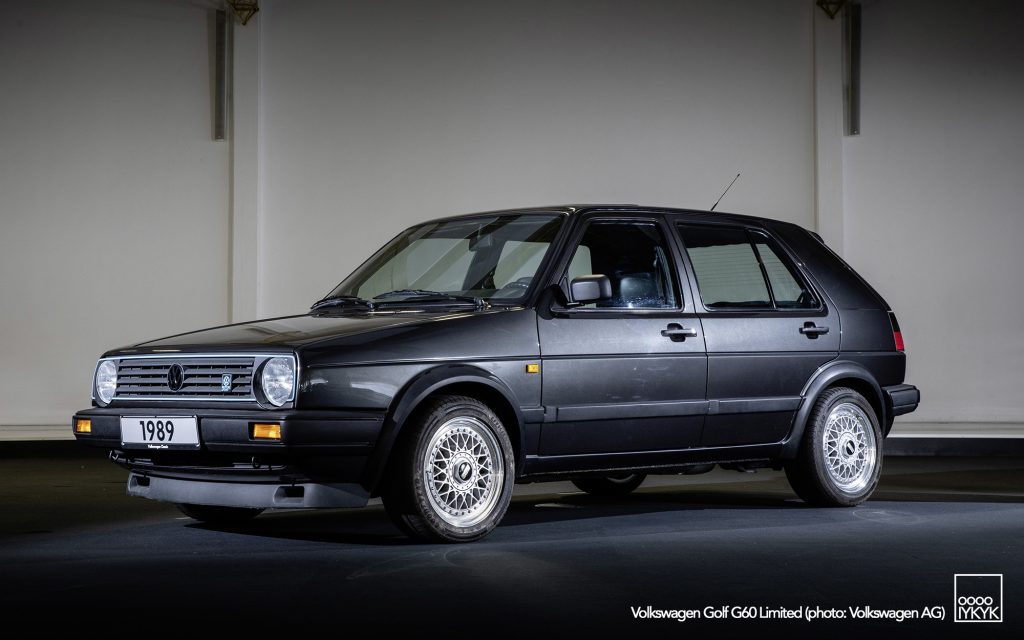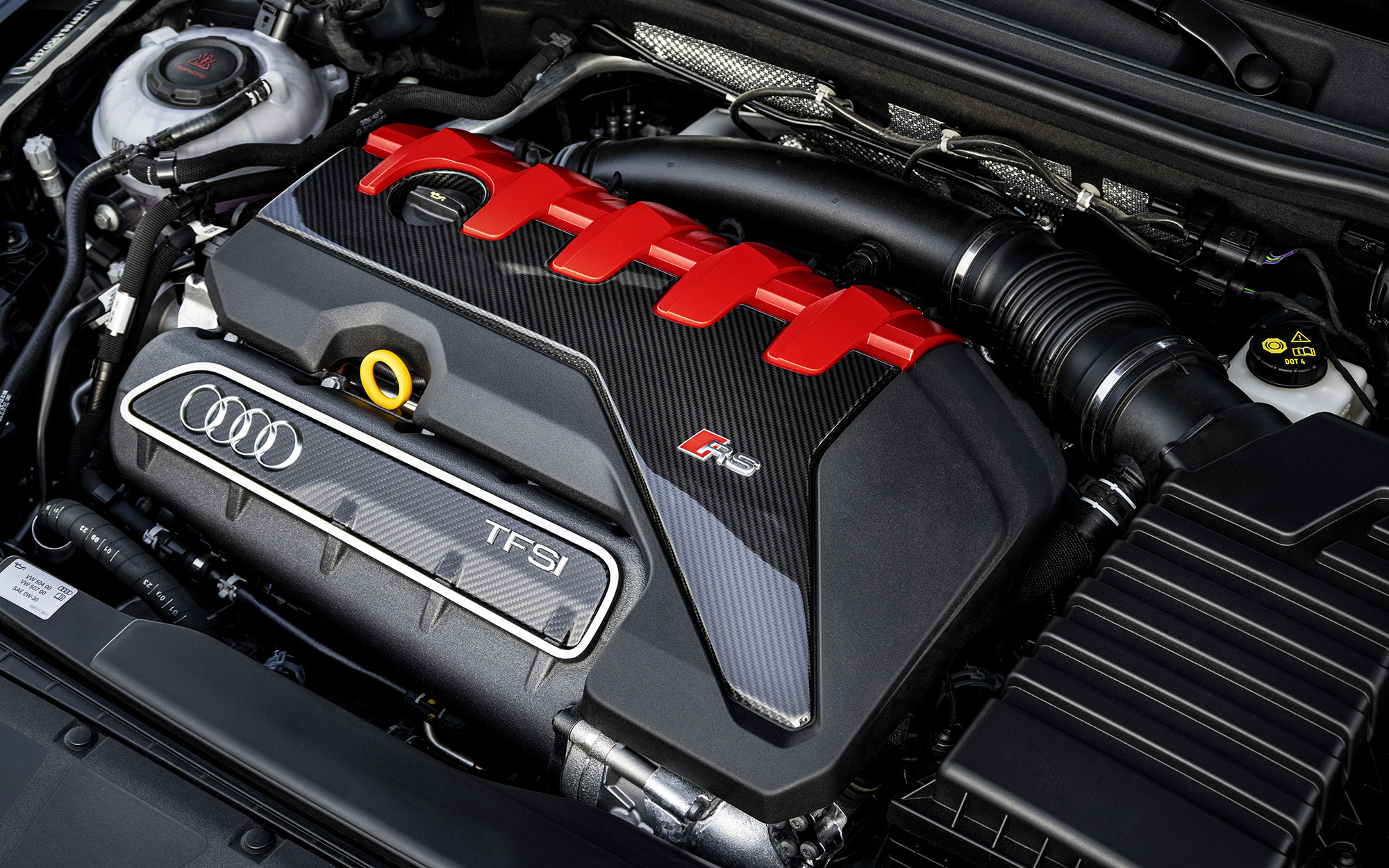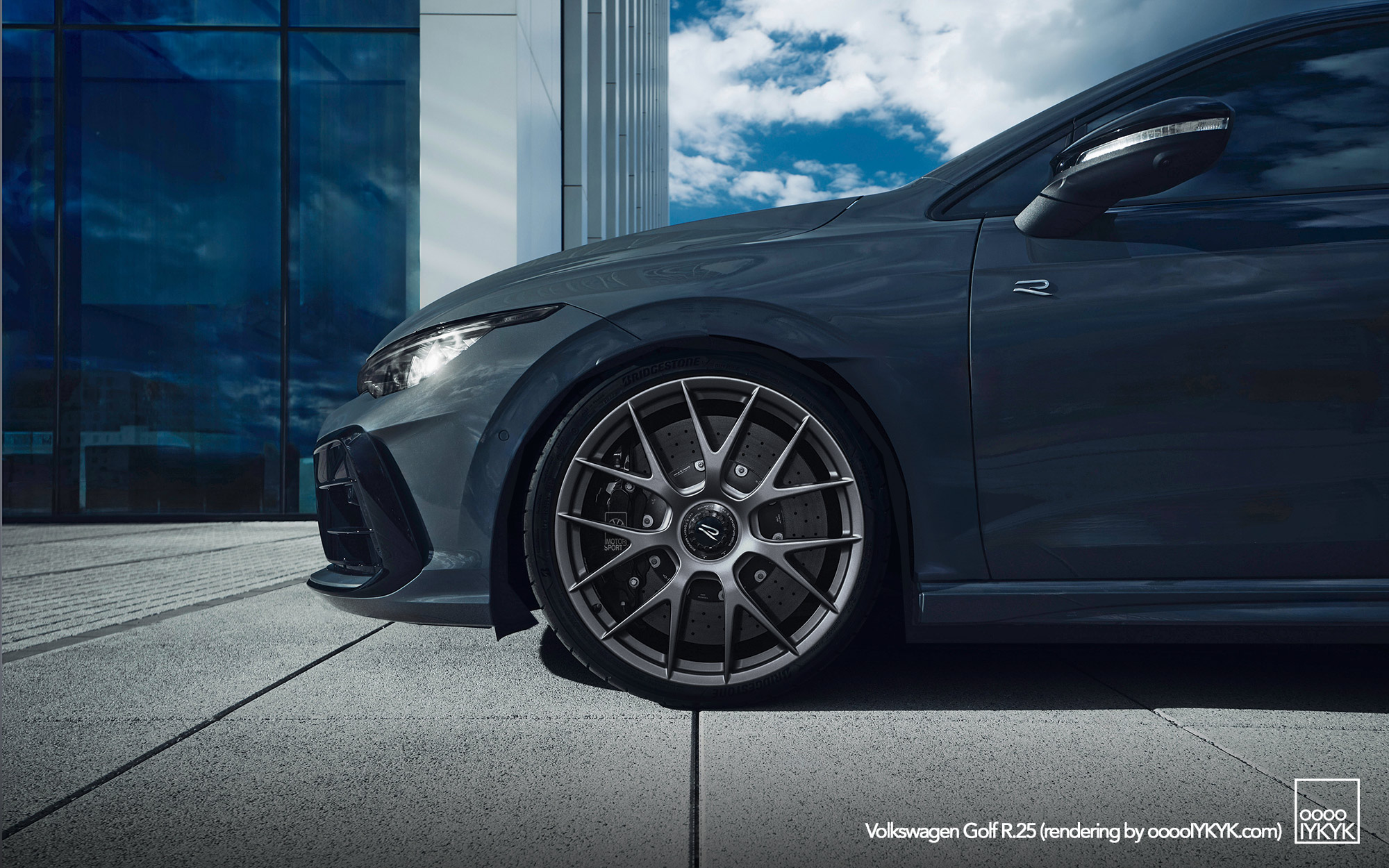There’s a new rumor mill out of Autocar Magazine this morning suggesting Volkswagen has moved to create the ultimate Golf R in time for the model’s 25th anniversary. At the heart of the idea is use of Audi’s venerable EA855 5-cylinder engine (a.k.a. DAZA) and a plan that will see the engine attaining the extended production run most enthusiasts have been praying for.
According to the piece penned by the almost always reliable and well-informed Autocar contributor Greg Kable, the brand is preparing the most powerful Golf ever built to celebrate a quarter century of Volkswagen R and for that it has finally turned to Audi’s potent evolution of the 5-cylinder concept once pioneered in much simpler form during the MkV Golf days when it was sold as “Rabbit” in the U.S.A. and that 07K derivative engine with iron block and neither turbocharger nor direct injection meant a more cost effective option to the 2.0 TFSI in a market less taxed on displacement.

SIDE NOTE
This isn’t the first time Volkswagen has gone all-in on a hyper Golf. Back in the 1980s, the mad scientists at Volkswagen Motorsport built the ultra exclusive Golf G60 Limited. That car, a rather plain-looking black 4-door Golf, was underpinned by the brand’s then-current Syncro viscous-coupling all-wheel drive system paired to a G60 supercharged 16-valve 2.0-liter engine that went into nothing else ever with the exception of a few unicorn-rare Rally Golfs. In this case though, the only way you’d really know what you were looking at would be to spot the BBS RS 3-piece alloys or Volkswagen Motorsport badges front and rear.
Back to the modern 5-cylinder lineage, most of us know the rest of that familiar RS story. The Mk2 TT RS debuted a turbocharged FSI version, while later TT RS and then RS 3 would move on to the aluminum block EA855 we have today.
Rumors have suggested that the EA855’s days were numbered due to increasing European emissions rules and costs needed to keep an engine only really used in niche products in compliance with EU regulations. That’s where the Golf comes in, offering a lifeline specifically helping fund reengineering for Euro 7 rules that would ensure enthusiasts continue to hear its 5-cylinder warble into the next decade.
This special R, said by Kable to be due in 2027, is positioned as the definitive send-off before the Golf range pivots to full electrification. Rumored figures point to output of at least 394 horsepower for the Volkswagen, matching today’s RS 3.
Apparently, engineers are said to be targeting more, a fact that’s consistent with another Autocar rumor we just reported on where Audi Sport GmbH is also readying a hotter RS 3 that is possibly a GT .
Whether or not the Golf R gets the hottest versions of the engine (and that’s doubtful) the VW should still comfortably come in under the four-second mark for 0-62 mph runs, a benchmark previously reserved for Audi models.
To handle the extra power, Volkswagen will borrow more than just the motor. Expect the RS 3’s torque-splitting rear differential that’s already been offered as optional kit in some Golf Rs, a recalibrated version of the RS 3’s dual-clutch gearbox and upgraded suspension geometry should also make the cut.
The weight of the Golf R is expected to climb modestly with the larger engine, though Autocar reports efforts are being made to offset it. Forged aluminum Warmenau wheels, semi-slick Bridgestone Potenza Race tires, and lightweight interior options such as bucket seats are expected to keep the car sharp. Bigger brakes are a given, with the RS 3’s 380 mm carbon-ceramic setup being one possible option. Additional chassis tweaks—extra negative camber, stiffer mounts, and reinforced knuckles—should further dial in handling precision, and assure the Golf R is as credible on circuit as it is the autobahn.
Aerodynamics also see attention. Autocar’s piece includes some spy photos of early prototypes sporting larger front intakes, bonnet vents, and an aggressive rear wing. Titanium-tipped quad exhausts with active flaps appear to be part of the package.
Inside, a pared-back driver’s cabin focused on performance is expected, consistent with other recent anniversary specials like the Golf GTI Edition 50.

EXTENDING THE LIFE OF DAZA
The most important part of this story, at least as read by regulars to this site, is the survival of the EA855. For years, Audi Sport executives hinted there was more potential left in the five-cylinder, with former boss Sebastian Grams calling out untapped potential beyond the 401-horsepower RS 3 performance. Bringing the motor into the Golf not only strengthens the business case but demonstrates Audi’s commitment to refining rather than abandoning one of its most distinctive and loved engines. Updates for Euro 7 will include new particulate filters, higher-density catalysts, and recalibrated injection mapping—proof that Audi is investing in keeping this powerplant relevant in parallel with advancements in electromobility that are also necessary for the bottom line.
Ultimately, the 25th anniversary Golf R will be remembered less as a limited-edition hot hatch and more as a statement. Volkswagen and Audi could quietly retire the five-cylinder with the RS 3 and hope nobody notices. Instead, they appear to be doubling down, giving Wolfsburg’s icon a proper farewell tour before electrification takes hold. In a market increasingly defined by priorities such as silence and infotainment, this Golf and other subsequent EA855-powered Audi models seem to go the opposite way, ensuring that the visceral nature of the inline 5-cylinder and its unmistakable howl remain a part of the program.


